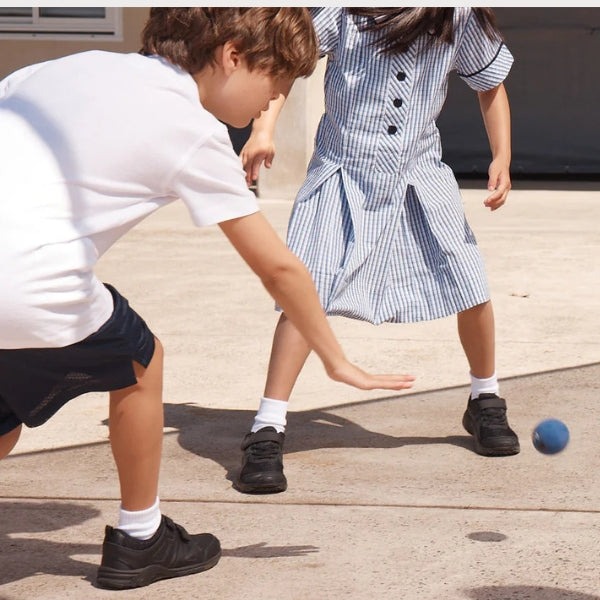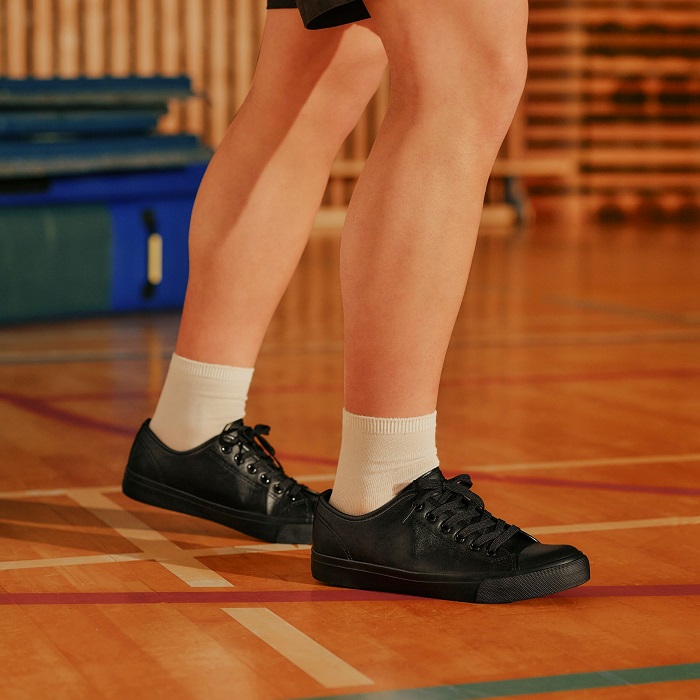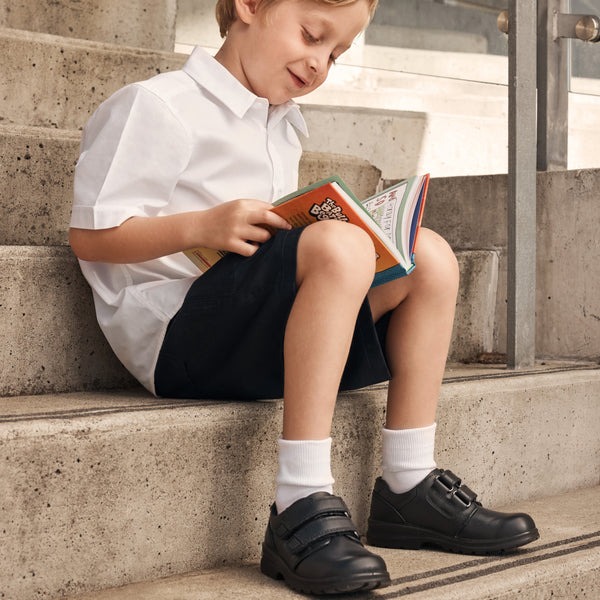Physical Address
304 North Cardinal St.
Dorchester Center, MA 02124
Physical Address
304 North Cardinal St.
Dorchester Center, MA 02124

The right school sports shoes can make a big difference in a child’s athletic performance. Quality footwear provides support for growing feet and helps prevent injuries. During sports, children’s feet face a lot of stress. Good shoes absorb shock and reduce the strain on legs and joints. They also improve posture and balance, which is key in any physical activity. Moreover, proper sports shoes boost confidence. Kids feel ready to participate and give their best in comfortable and supportive shoes. It’s important to pick shoes that are designed for the activity your child enjoys. So, whether it’s running, basketball, or soccer, the right shoe matters. Look for those that match the needs of the sport and the child’s foot shape. Remember to check the shoes regularly for wear and tear, and replace them as needed.
When purchasing school sports shoes for children, certain key features must be given priority. These features ensure the footwear’s performance, safety, and its ability to withstand regular use. Knowing what to look for can help parents make informed decisions and provide their kids with the best possible equipment for their sports activities.
First and foremost, the fit and comfort of sports shoes are crucial. The right fit prevents blisters and discomfort, allowing kids to concentrate on the game without distractions. Look for shoes with a snug fit, but with enough room to wiggle toes. Cushioning is also essential, as it provides shock absorption and reduces impact on joints. Breathable materials help keep feet dry and reduce the risk of fungal infections.
Next, consider the durability and material quality of the shoes. Kids are active and require shoes that can endure the rigors of sports. High-quality materials last longer, making the shoes a more economical choice in the long term. Leather or synthetic materials offer good support and are often durable, while mesh materials provide excellent breathability.
Lastly, traction and stability are key for any school sports shoe. Shoes should have a strong grip to prevent slipping during sports like soccer or basketball. The outsole should be made of non-marking rubber for good traction on gym floors. Stability features like reinforced heels or special lacing systems can greatly improve ankle support, reducing the risk of injuries. Always check the shoes’ soles for these elements to ensure your child has the advantage of secure footing in their sporting endeavors.

When choosing school sports shoes, it’s important to understand the different types that cater to various activities. Each sport requires specific features from its footwear for optimal performance and safety. Here’s what to consider for some common school sports:
Running shoes should be lightweight and have good cushioning to absorb impact. They typically feature a breathable design to keep feet cool and reduce sweating during long runs.
Basketball shoes are designed with high tops to provide extra ankle support. They have a flat, wide sole to ensure stability and good traction on the court.
Soccer requires shoes with cleats for traction on grass fields. These have a low-profile fit for better control of the ball and lightweight construction to aid swift movements.
For kids involved in multiple sports, cross-trainers are a versatile option. They provide moderate support and cushioning suitable for a range of activities from gym classes to field sports.
When selecting school sports shoes, keep in mind the specific demands of your child’s favored activities. This helps ensure they have the right support, comfort, and performance capabilities. Always look for features that align with the type of sport, and remember that the right pair of shoes can significantly benefit a young athlete’s experience and development.
Ensuring your child has the correct size in school sports shoes is crucial. Kids’ feet grow quickly and wearing the wrong size can lead to discomfort and injury. Here are some tips to make sure you pick shoes that grow with your child:
Keep in mind that proper fit is more important than brand or style. Children need the right size to play safely and comfortably. The best school sports shoes are ones that match the sport, fit well, and support healthy foot development. Always prioritize fit and function over fashion when selecting footwear for young athletes.

When it comes to school sports shoes for kids, brand and design can play a significant role. While the brand itself may not always dictate the quality or suitability of the shoe for sports, popular brands often invest heavily in research and development. This can lead to innovative features that enhance performance and safety. Furthermore, well-known sports brands usually offer a range of products tailored to specific sports, providing appropriate support and functionality.
However, it’s important not to overlook less famous brands that might offer quality shoes at a more affordable price. Sometimes, these brands have excellent options that fit the needs of a young athlete just as well. It’s always beneficial to compare different brands based on the features they offer.
Design is another aspect that can impact a child’s desire to wear the shoes. Kids tend to be drawn to shoes with appealing aesthetics and may be more eager to participate in sports if they like their footwear. Bright colors, patterns, and the association with favored athletes can boost a child’s confidence on the field.
Yet, it’s crucial to balance the appeal of design with the practicality of the sports shoes. The design should not compromise critical features such as support, stability, and comfort. Always place function over fashion, but consider design as a way to encourage kids to stay active and enjoy their sports.
To sum up, while brand and design are important, they should not be the only factors in your decision-making. The best choice in school sports shoes is one that combines brand reputation, design appeal, and, most importantly, the essential features that ensure your child’s comfort, safety, and performance in their sports activities.
Proper maintenance and care are essential for school sports shoes. They ensure shoes last longer and stay comfortable. Follow these tips to help your child’s sports shoes stay in top condition:
By following these simple steps, you can help your child’s school sports shoes stay supportive, comfortable, and durable. This also aids in preventing foot problems and keeping them safe during activities.

Finding the right place to shop for school sports shoes can be just as important as choosing the shoes themselves. Here are some reliable places to consider when shopping for your child’s athletic footwear:
Remember to bring your child along when shopping to ensure a proper fit. Testing the shoes by walking or even a light jog within the store can be helpful. Always prioritize quality and suitability over price and brand to ensure you get the best school sports shoes for your child’s sporting needs.